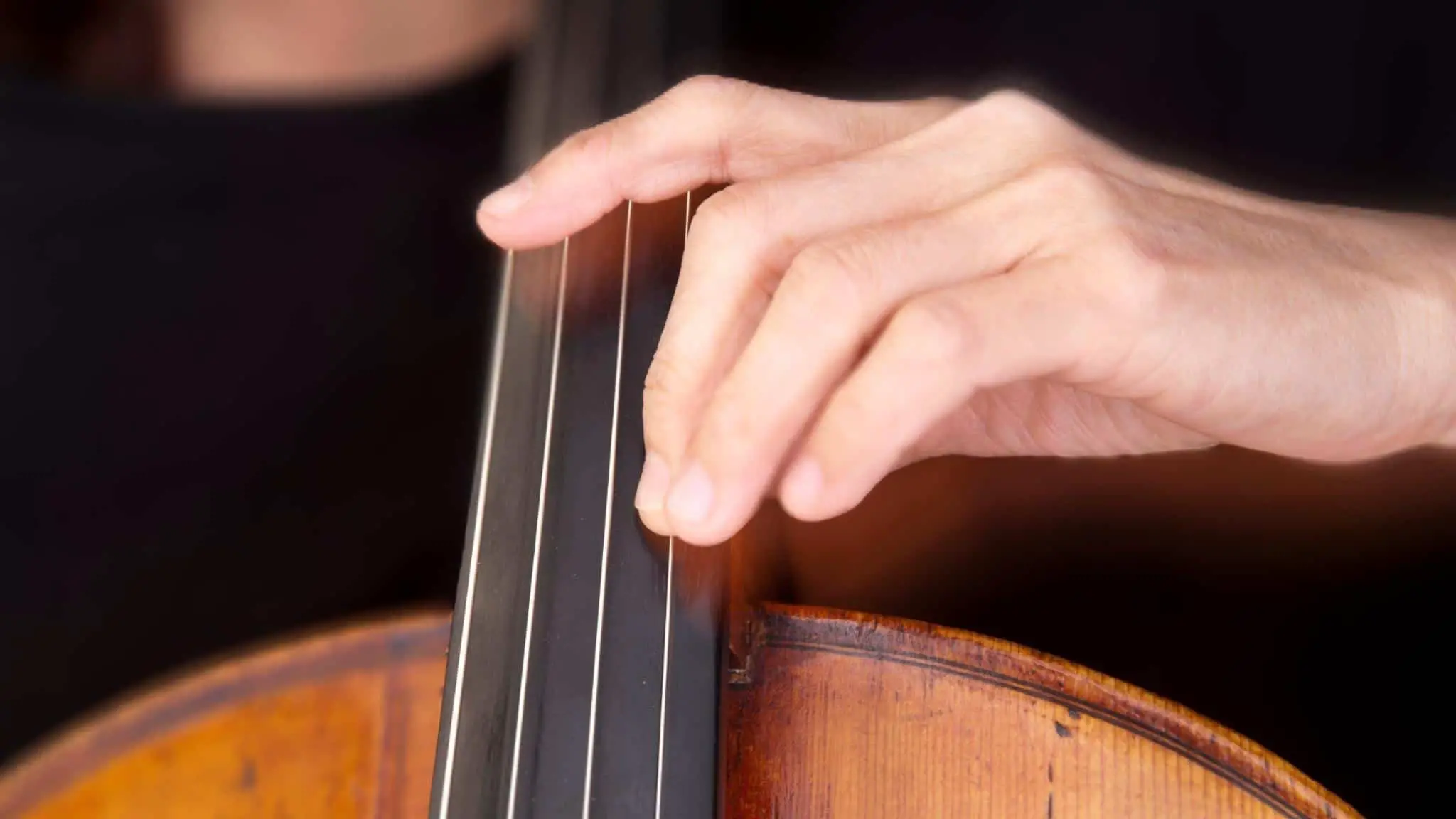Vibrato is a musical effect consisting of a regular, pulsating change of pitch. It is used to add expression to vocal and instrumental music.
Vibrato is typically characterized in terms of two factors: the amount of pitch variation (“extent of vibrato”) and the speed with which the pitch is varied (“rate of vibrato”).
In singing it occurs spontaneously through a nervous tremor in diaphragm or larynx. The vibrato of the string instrument and wind instrument is an imitation of that vocal function.

In the organ, the vibrato is imitated by a small fluctuation of wind pressure, also known as a Tremolo or Tremulant.
What does vibrato sound like?
Vibrato sounds like a pulsating or wavering effect added to the pitch of a note. This musical effect is typically used to add expression to vocal and instrumental music.
Types of vibrato
Natural vibrato
This type of vibrato is created by the natural coordination between the lungs, diaphragm, larynx, and vocal cords. As a result, this type of vibrato tends to be more subtle and controlled than other types of vibrato.
Artificial vibrato
This type of vibrato is created through additional manipulation of the pitch, typically by a musician using their fingers. As a result, this type of vibrato is usually more dramatic and exaggerated than natural vibrato.
Diaphragmatic vibrato
This type of vibrato is created by the movement of the diaphragm, which causes the vocal cords to vibrate. This type of vibrato is often used in opera singing, as it allows for a more sustained sound.
Laryngeal or vocal trill vibrato
This type of vibrato is created by the movement of the larynx, which causes the vocal cords to vibrate. This type of vibrato can be quite subtle or very dramatic, depending on the musician or singer.
Each type of vibrato has its own unique sound and expression, making it an important tool for musicians and singers when adding emotion and intensity to their music.
How do you produce vibrato on vocals or instruments?
In order to produce vibrato on vocals or instruments, you need to change the pitch of the voice/instrument at a regular, pulsating rhythm.
Vocal vibrato and wind instrument vibrato
This can be done by either moving your jaw up and down very quickly, or by continuously adjusting the speed of air as it passes through your vocal chords (vocal vibrato) or through your instrument (wind instrument vibrato).
String instrument vibrato
On a string instrument, vibrato is produced by holding the string down with one finger while moving the other fingers of the hand up and down behind it.
This causes the pitch of the string to change very slightly, creating a pulsating effect. The pitch changes because the tension on the string increase with each slight bend.
Percussion instrument vibrato
Percussion instruments such as drums can also produce vibrato by changing the speed of the strike or brush against the drum head.
This creates a similar pulsating effect, although it is much more subtle than vocal or string instrument vibrato.
One of the challenges associated with vibrato is that it can be difficult to produce consistently across performances.
What are the benefits of using vibrato in music performances and recordings?
Regardless of which method you use to produce vibrato, it can be a very effective way of adding expression and emotion to your music.
For example, vocal vibrato can add richness and depth to a singer’s voice, while wind instrument vibrato can make an instrument sound more expressive and emotional.
In addition, string instrument vibrato is often used by composers to highlight certain melodic lines or passages in a piece of music.
So if you’re looking for ways to add character and expressiveness to your music, vibrato can be a very useful tool!
How can you incorporate vibrato into your own musical performances and recordings?
As with every technique you use, vibrato can be a great way to introduce your own style to the music you make.
The amount of vibrato can create a sound that’s unique to your own playing style and can even create a recognizable voice for your music.
Overdoing it is a surefire way to make your music sound amateurish though, so watch out how you use it.
Can everyone do vibrato?
Yes, everyone can do vibrato! However, some people may find it easier to produce than others. This is often due to the size and shape of your vocal cords or the type of instrument you’re playing.
For example, people with smaller vocal cords tend to find it easier to produce vibrato than those with larger vocal cords.
And on a string instrument, it’s often easier to produce vibrato with a smaller instrument like a violin than a larger instrument like a cello.
Is vibrato natural or learned?
While some people may find it easier to produce vibrato than others, it is a technique that can be learned by anyone.
There are many resources available (including online lessons and tutorials) that can help you learn how to produce vibrato on your own voice or instrument.
Conclusion
Vibrato is a musical effect that can be used to add expression and emotion to your music. It is produced by changing the pitch of the voice/instrument at a regular, pulsating rhythm.
While some people may find it easier to produce vibrato than others, it is a technique that can be learned by anyone so get started now, it’ll make all the difference in your expression.
I'm Joost Nusselder, the founder of Neaera and a content marketer, dad, and love trying out new equipment with guitar at the heart of my passion, and together with my team, I've been creating in-depth blog articles since 2020 to help loyal readers with recording and guitar tips.

